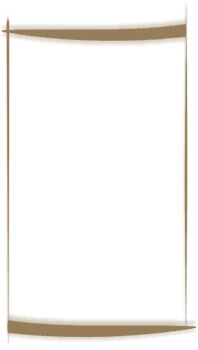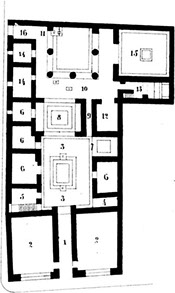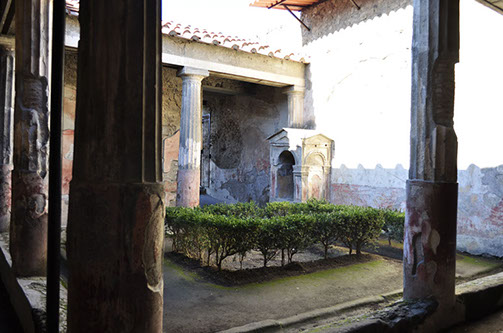
As in most Roman houses of the time, the house of the Tragic Poet is divided into two main areas, one public and one private. The front of the house, facing south, constitutes the public area. It has a central access and two large spaces located on both sides of it, with open walls facing the street (see map). These rooms would be destined to the commercial activity of the inhabitants of the house (tabernae), or less probably to the lodging of the servants.
Through the main entrance there is access to a narrow corridor or lobby, at the end of which the atrium is located, the most decorated room in the entire domus. In this open courtyard is located the impluvium, a rectangular pond recessed in the ground under an open roof or compluvium, whose function was to collect rainwater to be used by the members of the house. In the northern part of the impluvium there was a source to extract water from the pond. On the opposite side of the atrium is the tablinum, a second open public room.

House of the Tragic Poet
CHARACTERISTICS















